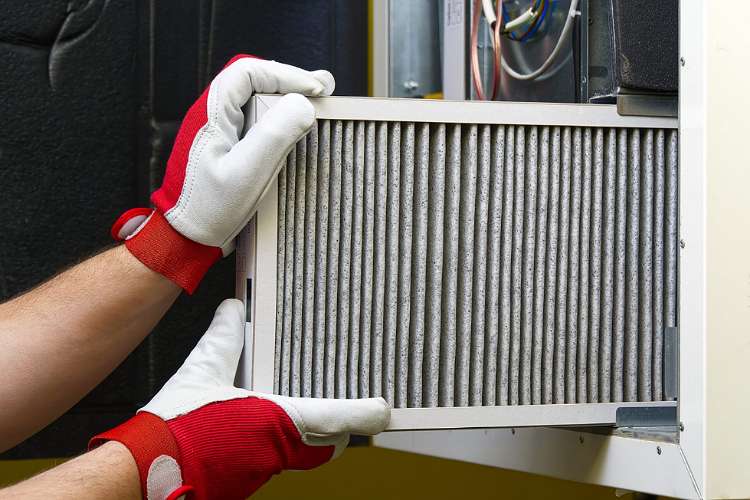The comfort of a home relies heavily on the furnace system, which not only provides warmth but also contributes to the quality of air indoors. A properly functioning furnace ensures consistent heating while supporting a cleaner and healthier living space. However, the performance of any furnace is tied directly to how well the air is filtered and circulated throughout the home. Poor air quality can lead to unnecessary strain on the system, higher energy costs, and frequent breakdowns that demand attention. We will explore how air quality and filtration influence furnace repair, why these elements should never be overlooked, and the steps homeowners can take to maintain efficiency while preventing costly issues.
Air Quality and Filtration as Key Factors in Furnace Repair
1. Impact of Dirty Filters on Furnace Efficiency
One of the most common reasons for furnace repair is a clogged or dirty filter. A furnace filter has the essential task of trapping dust, dirt, pet dander, and other airborne particles before they circulate throughout the home. When filters are neglected, they quickly become clogged, reducing airflow and forcing the furnace to work harder than necessary. This added strain not only diminishes the unit’s efficiency but can also cause critical components, such as the blower motor, to overheat or fail.
Regularly changing or cleaning filters prevents these issues and reduces the frequency of repair calls. Homeowners who ignore filter maintenance often notice inconsistent heating, unusual noises, and even system shutdowns. Companies like Semper Fi Heating and Cooling often emphasize that a simple act, such as timely filter replacement, plays a major role in extending the furnace’s life and reducing long-term repair costs, making it one of the most impactful yet affordable steps in furnace care.
2. The Relationship Between Indoor Air Quality and System Longevity
Indoor air quality directly affects how long a furnace can operate before it requires repair. Pollutants such as smoke, pollen, dust, or chemicals from cleaning products can circulate through the system and accumulate within the ducts and furnace components. Over time, this buildup restricts airflow, causing the system to work harder and wear down parts that might otherwise last for many years. A furnace exposed to poor indoor air quality is more likely to require repairs due to clogged coils, dirty burners, or damaged sensors. Improving air quality through filtration systems, humidifiers, and proper ventilation ensures that the furnace remains free from excess strain. In homes where air quality is consistently monitored, furnaces tend to last longer, repairs are less frequent, and energy bills remain stable. This relationship emphasizes that furnace care is not only mechanical but also environmental, highlighting the importance of addressing both aspects together.
3. How High-Quality Filters Reduce Repair Needs
Not all filters provide the same level of protection for furnaces. Basic filters may trap large particles but fail to capture smaller contaminants such as mold spores or fine dust. This allows harmful debris to pass into the system, leading to wear and potential breakdowns. Investing in high-quality filters with higher Minimum Efficiency Reporting Values (MERV) can significantly reduce the chances of furnace repair by keeping internal parts cleaner for longer periods. While such filters may cost more upfront, they reduce long-term repair expenses by preventing dirt buildup in sensitive components, such as heat exchangers or flame sensors.
Additionally, households with pets, smokers, or residents suffering from allergies benefit even more from enhanced filtration, as it protects both the furnace and the health of those living in the home. The reduction in airborne irritants not only improves comfort but also ensures that the furnace does not suffer from preventable issues caused by dirty air.
4. The Role of Professional Maintenance in Monitoring Air Quality
While homeowners can replace filters regularly, professional maintenance plays a vital role in ensuring air quality and furnace health are aligned. During maintenance visits, technicians inspect the ducts, vents, and furnace itself for dust accumulation, leaks, or blockages that could impact performance. They may also recommend additional filtration systems, such as HEPA filters or electronic air cleaners, for homes with persistent air quality concerns. Professional servicing also identifies issues that a homeowner might overlook, such as restricted airflow from duct leaks or early signs of damage to internal components.
By integrating air quality monitoring into furnace maintenance, the risk of sudden breakdowns is minimized, and the system remains reliable throughout the heating season. Regular maintenance also provides peace of mind, as homeowners know both the furnace and the air it circulates are in optimal condition. This proactive approach saves money over time by reducing emergency repair needs and extending the furnace’s lifespan.
The role of air quality and filtration in furnace repair cannot be overstated. Furnaces are designed to provide warmth and comfort, but their efficiency and longevity are directly influenced by the cleanliness of the air circulating through them. Dirty filters, poor indoor air conditions, and low-quality filtration materials all contribute to breakdowns, higher energy bills, and premature system failure. On the other hand, proper filter maintenance, improved indoor air quality, and professional servicing significantly reduce the need for repairs while supporting healthier living conditions. By understanding the close link between air quality and furnace health, households can create environments that are not only comfortable but also sustainable. In the long run, attention to air quality and filtration proves to be a crucial part of responsible furnace care.

